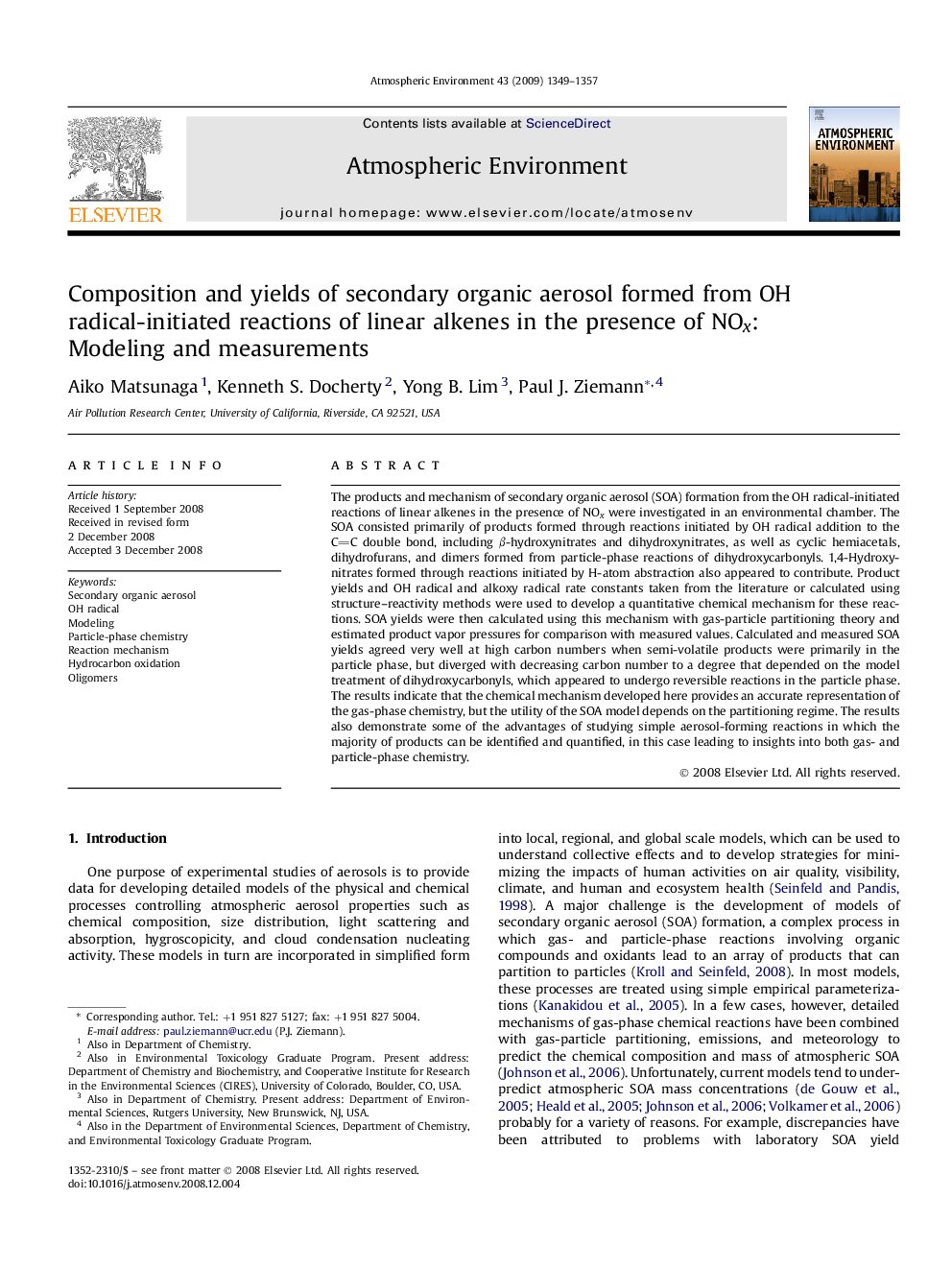| Article ID | Journal | Published Year | Pages | File Type |
|---|---|---|---|---|
| 4442018 | Atmospheric Environment | 2009 | 9 Pages |
The products and mechanism of secondary organic aerosol (SOA) formation from the OH radical-initiated reactions of linear alkenes in the presence of NOx were investigated in an environmental chamber. The SOA consisted primarily of products formed through reactions initiated by OH radical addition to the CC double bond, including β-hydroxynitrates and dihydroxynitrates, as well as cyclic hemiacetals, dihydrofurans, and dimers formed from particle-phase reactions of dihydroxycarbonyls. 1,4-Hydroxynitrates formed through reactions initiated by H-atom abstraction also appeared to contribute. Product yields and OH radical and alkoxy radical rate constants taken from the literature or calculated using structure–reactivity methods were used to develop a quantitative chemical mechanism for these reactions. SOA yields were then calculated using this mechanism with gas-particle partitioning theory and estimated product vapor pressures for comparison with measured values. Calculated and measured SOA yields agreed very well at high carbon numbers when semi-volatile products were primarily in the particle phase, but diverged with decreasing carbon number to a degree that depended on the model treatment of dihydroxycarbonyls, which appeared to undergo reversible reactions in the particle phase. The results indicate that the chemical mechanism developed here provides an accurate representation of the gas-phase chemistry, but the utility of the SOA model depends on the partitioning regime. The results also demonstrate some of the advantages of studying simple aerosol-forming reactions in which the majority of products can be identified and quantified, in this case leading to insights into both gas- and particle-phase chemistry.
